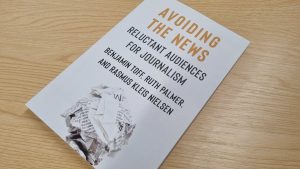Steelcase research insights
How to find insights from your research
You did the interviews, got the photos, and compiled the reams of data. Now what? A Steelcase experience could guide your next innovation project.
Jessie Scanlon – Fast Company
“The four-member group based in the Grand Rapids (Mich.) headquarters of the office furniture giant was studying the experience of cancer patients, and had spent months interviewing and photographing doctors and patients in oncology units at nine hospitals across the country. […]
Standing before all of this material, the Steelcase health research team faced the challenge of every innovation team after the initial research stage: how to tease useful insights out of all of this disparate data.”
Workspring & the workplace of the future
John F. Schneider tries to understand how Workspring, a recent offering from Steelcase that gets to the heart of the collaborative meeting and events space, can be seen as a physical reflection of their research into the workplace and into meeting dynamics and interactions.
“There seems to be a unified focus at Steelcase on user centered design and the development of holistic systems informed by thorough observation and research. This informs the ways in which Steelcase engages its customers and partners to result in greater value creation, and relevance in an industry that works hard to rise above a commodity mindset.”
Also take note that Steelcase just published the ‘Office Code‘, a research about ‘building connections between cultures and workplace design’.
“As multi-national organizations increasingly employ workers from a variety of countries under one roof, they are often faced with culture clashes between employees rooted in their national differences. Upon completion of a three-year exploration study on the relationship between national culture and office space, Steelcase, a global office environments manufacturer, releases the “Office Code”. This book is designed to help companies successfully integrate workers who think differently at work.
The research spans six European countries – the UK, the Netherlands, Germany, France, Italy and Spain – and shows that national culture and physical office space are not always in harmony, due to pressing economic constraints or the adoption of traditional office configurations. From the impact of meeting start times – for example in Germany it is essential to be on time, whereas in Italy, being late is acceptable or expected – to the message of a closed door signalling a need for privacy or nothing at all, the “Office Code” addresses how the nuances between different cultures under one roof can inform space planners to maximize collaboration and communication.”




